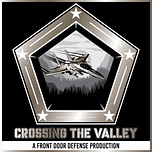About Ian
Ian has one of the most eclectic background — spanning military service, government, and the private sector. He served as a counterterrorism officer and nuclear engineer in the US Navy before becoming one of the first Presidential Innovation Fellows for the White House. He went on to serve as Chief Data Officer at the Department of Commerce before heading back to the private sector. In industry, Ian has been the managing director of a supply chain market intelligence company, a consultant to Google, and a product management leader at Socrata. He’s one of the most “well-rounded” leaders we’ve had on the program, and brings his expertise in product development, sales, and bureaucracy to his current role as CEO and founder of Turbine One.
About Turbine One
Turbine One focuses on adversary detection, helping "the good guys find the bad guys" through a hardware-agnostic software platform that processes overwhelming amounts of data from any sensor. The company's mission is to deliver edge AI capabilities to US warfighters, providing situational awareness, target detection, and automated threat recognition in environments with no communications or cloud access. Turbine One has gained traction through military exercises, connecting with end-users to validate their product and iterate based on feedback. They have aligned their product with the priorities of Army Intelligence leadership, such as automating the processing of intelligence data, and are working with testing and development organizations to field and evaluate their solution.
Key Takeaways
Voice of the end-user is critical, but not sufficient for success in the defense market. Engaging with warfighters through exercises and understanding their needs is essential, but startups must also secure executive sponsors, project champions, contracting vehicles, and budget to break through.
Navigating the defense acquisition system requires understanding power structures and incentives. Successful startups map out the key stakeholders who control change, from leadership and end-users to contracting officers and Congress, and develop strategies to address their priorities and concerns.
Startups must be prepared for resistance and bad actors in the defense ecosystem. Entrenched interests may engage in abusive practices, such as attempting to claim ownership of intellectual property or impose unfavorable contract terms. Startups need to anticipate these challenges and put structures in place to protect their interests.
Focusing on a specific, scalable product is key to breaking through in the defense market. While the allure of becoming an "everything company" or pursuing a venture studio model is strong, successful startups often pivot to a single product that can scale across multiple branches and meet urgent warfighter needs.
The defense market is slowly opening up to new entrants, but significant barriers remain. Organizations like the Defense Innovation Unit (DIU) are making progress in bringing new capabilities to the DoD, but the percentage of the overall budget going to innovative solutions is still small. Startups need grit, strategic partnerships, and a long-term commitment to the mission to succeed in this challenging environment.
For more on Ian: https://www.linkedin.com/in/iankalin/
For more on Turbine One: https://www.turbineone.com/












Ep. 19: How to Build Software for Warfighters